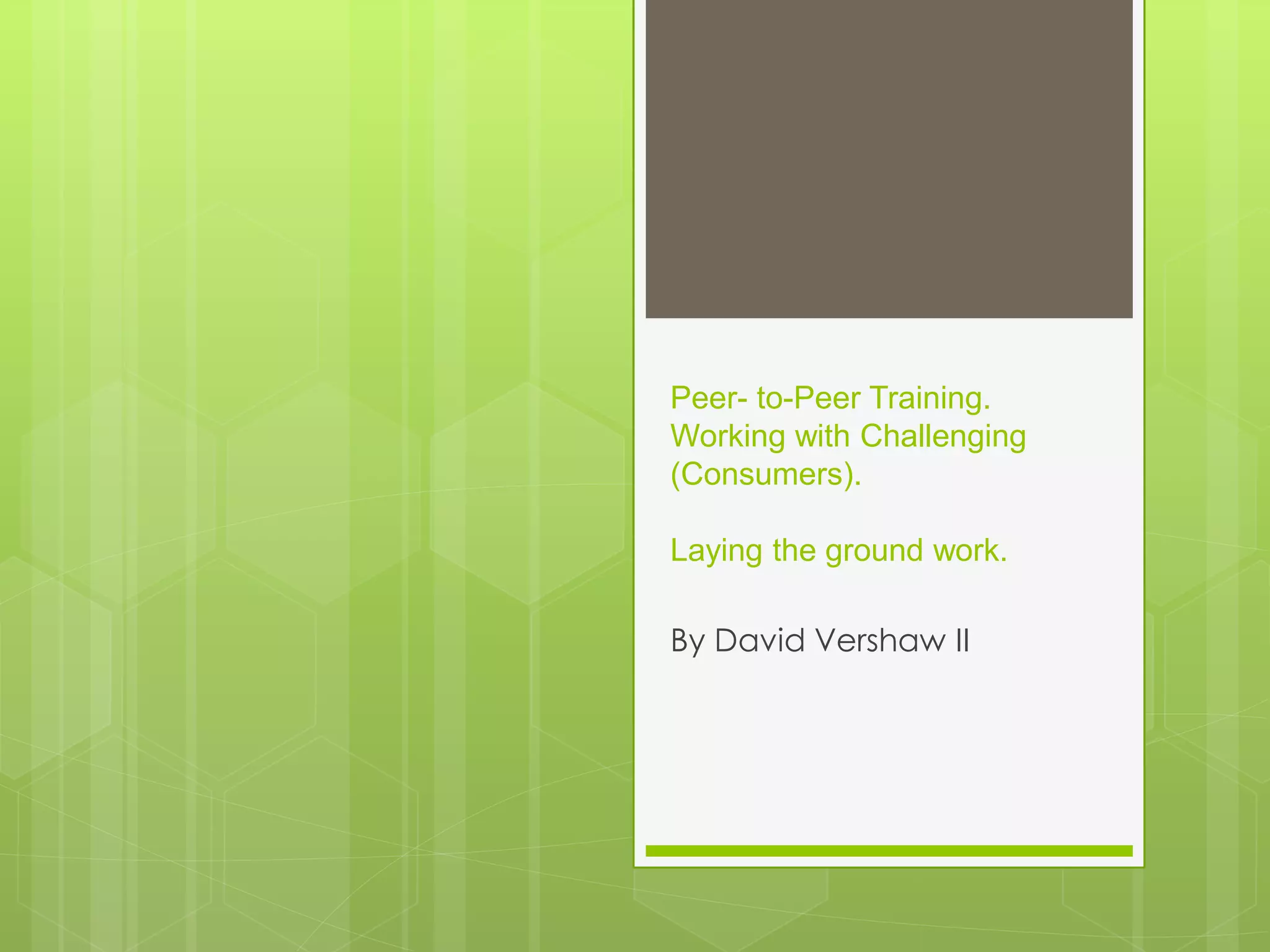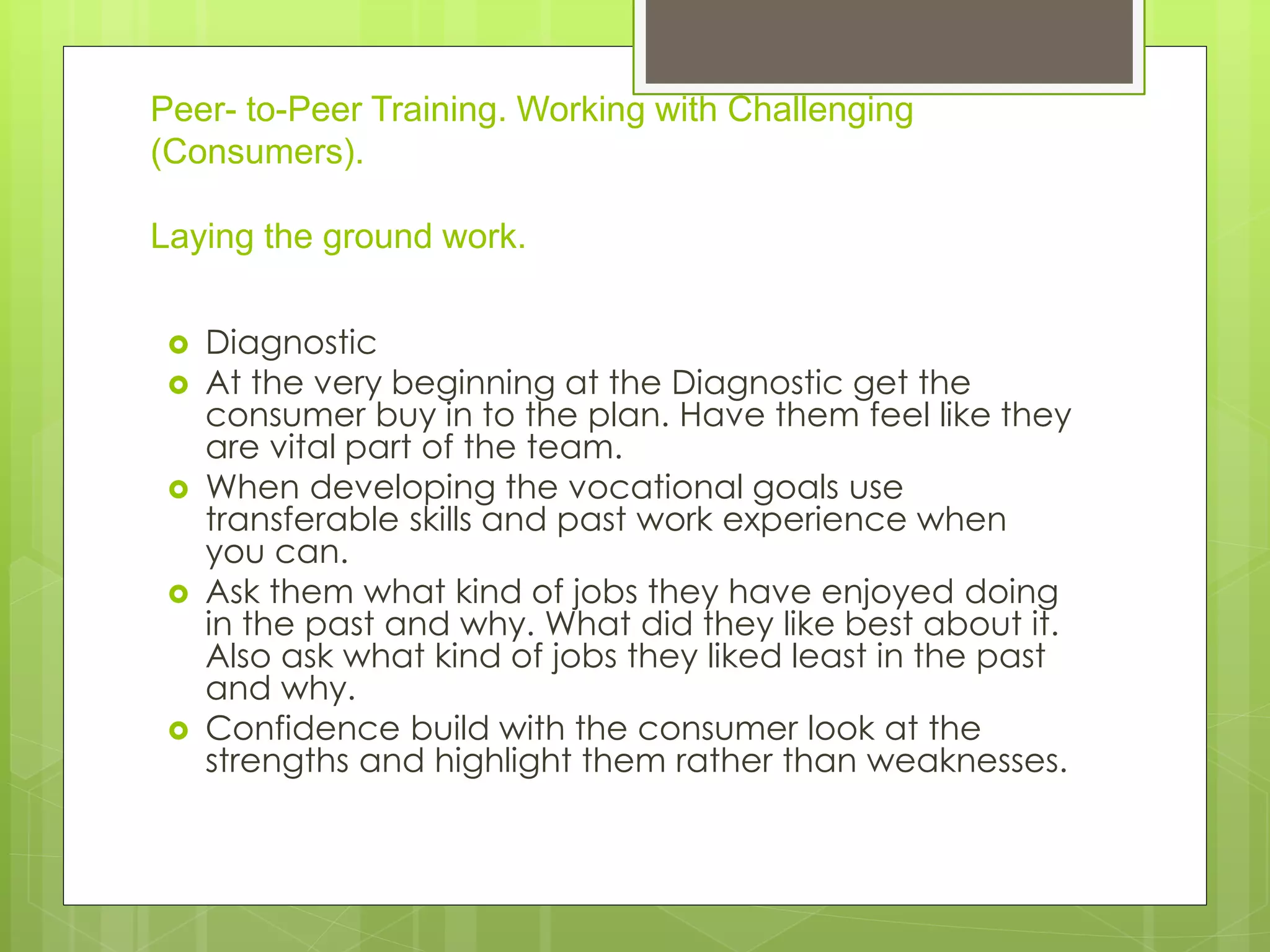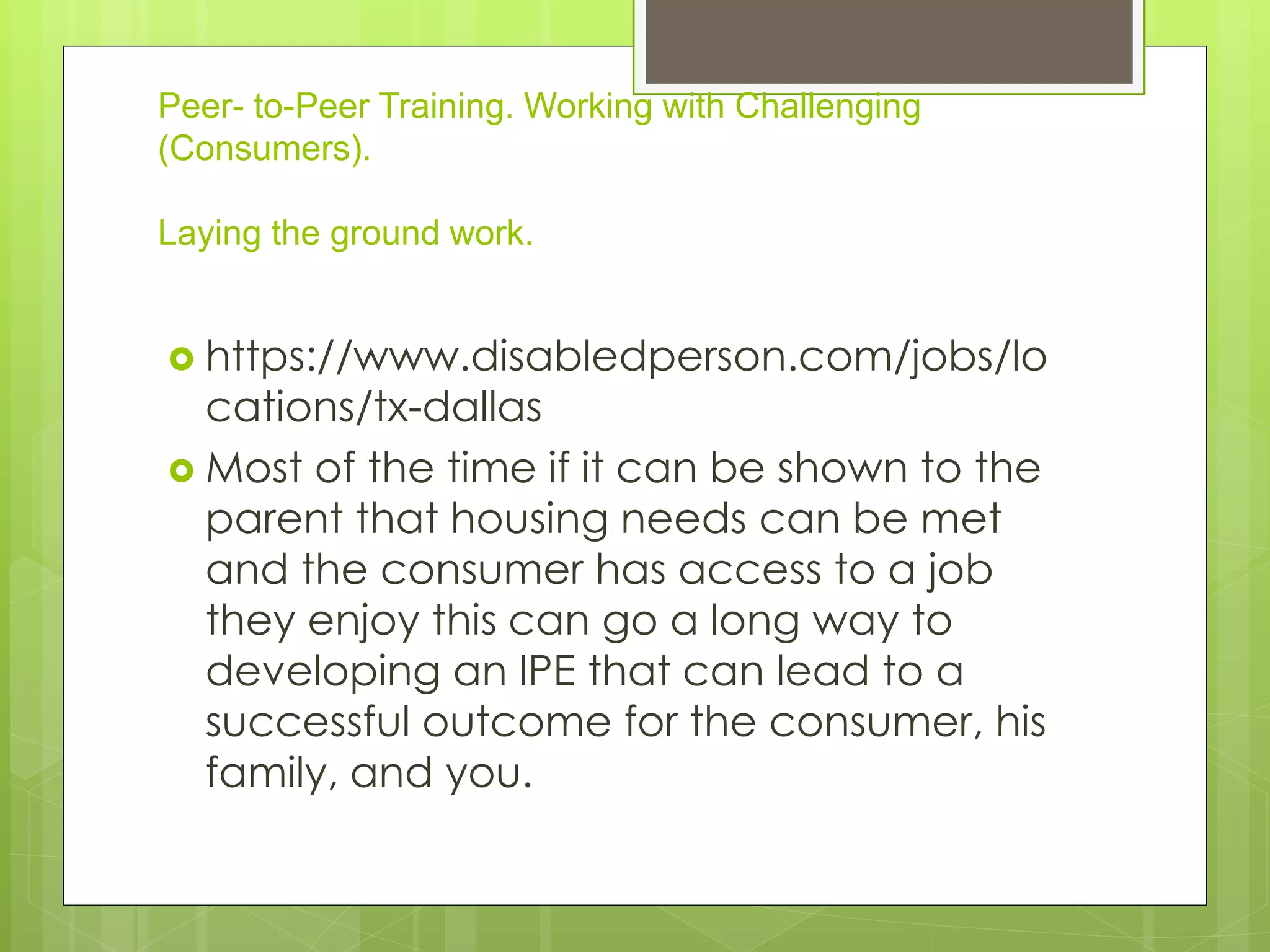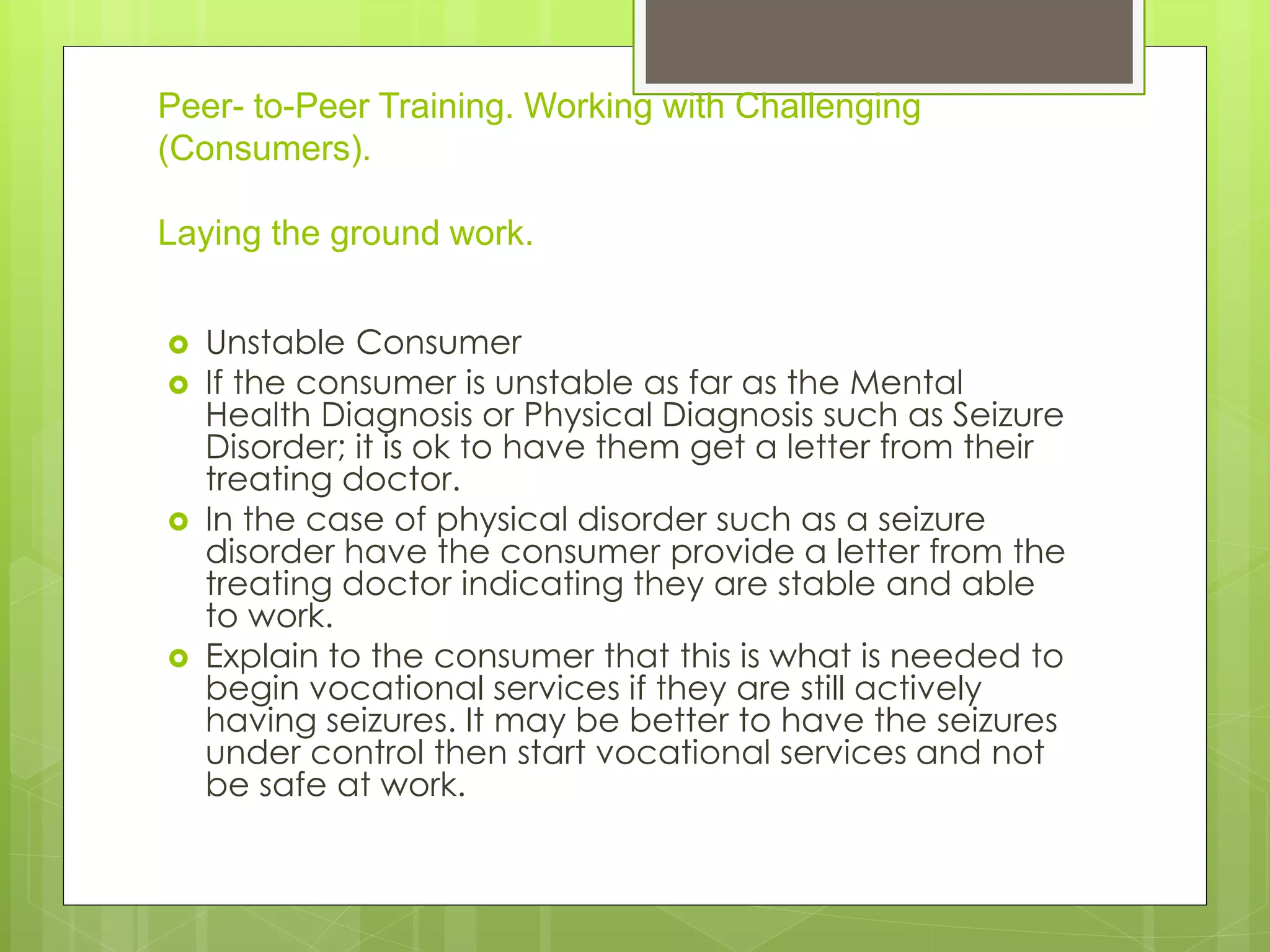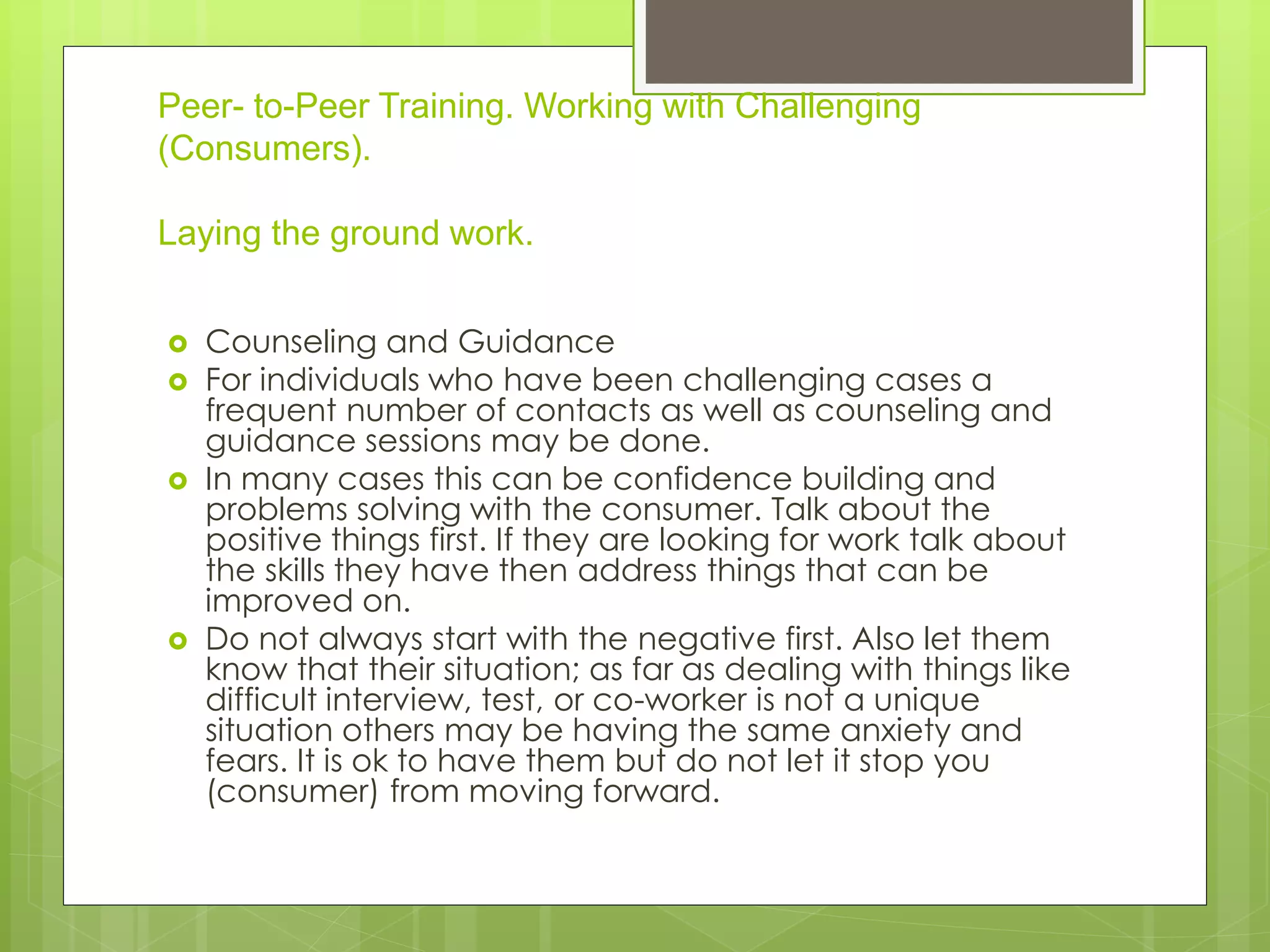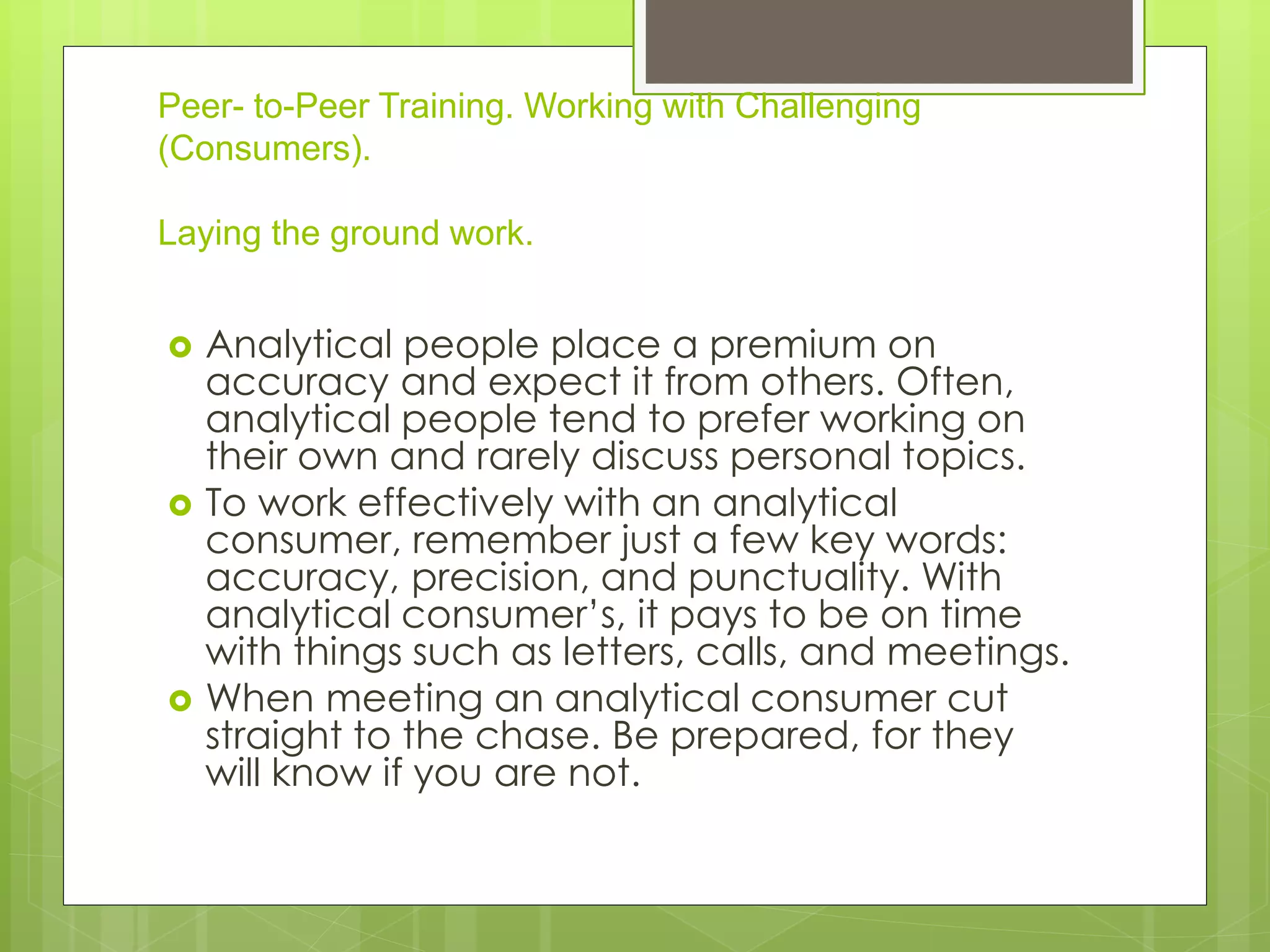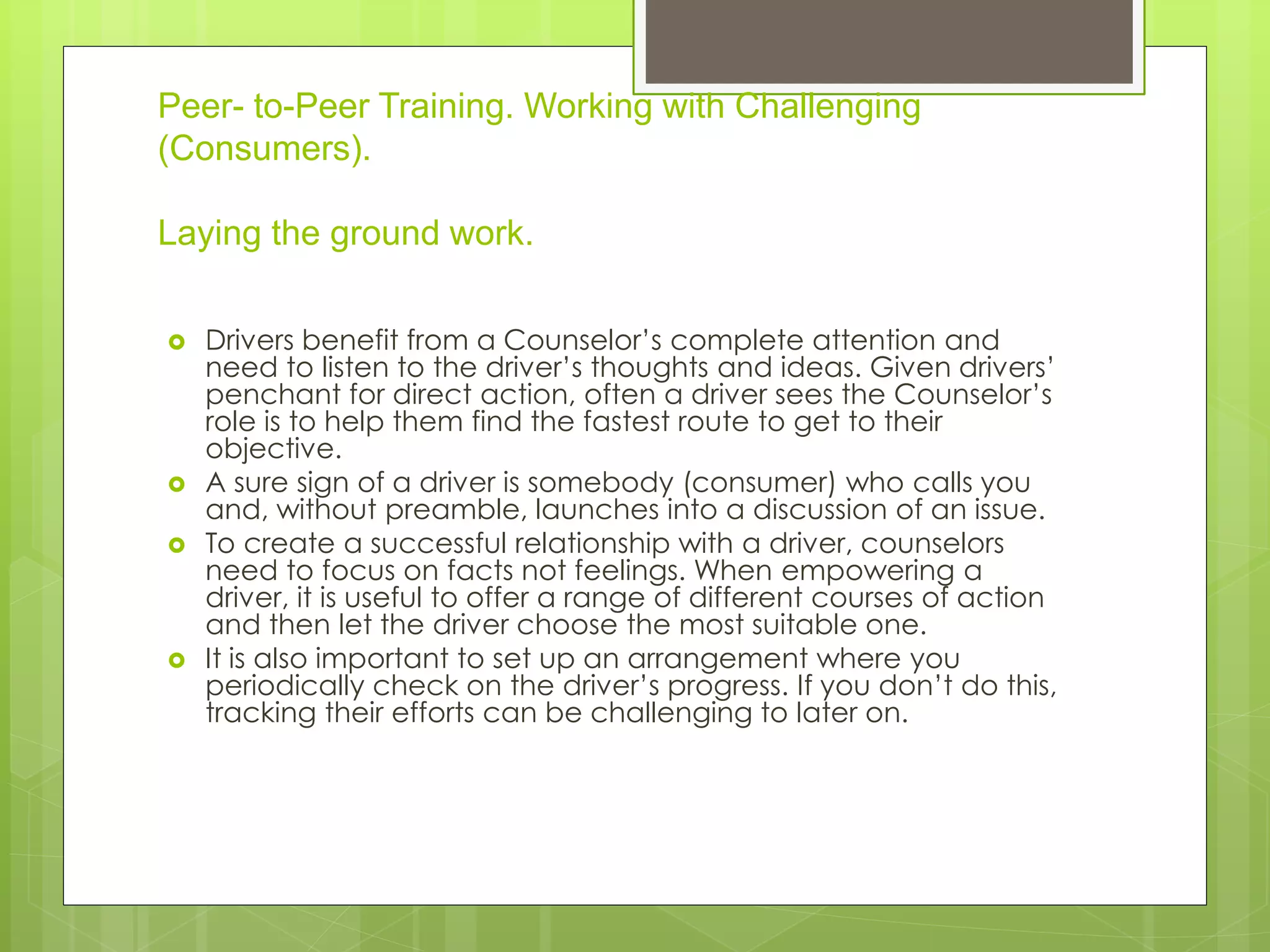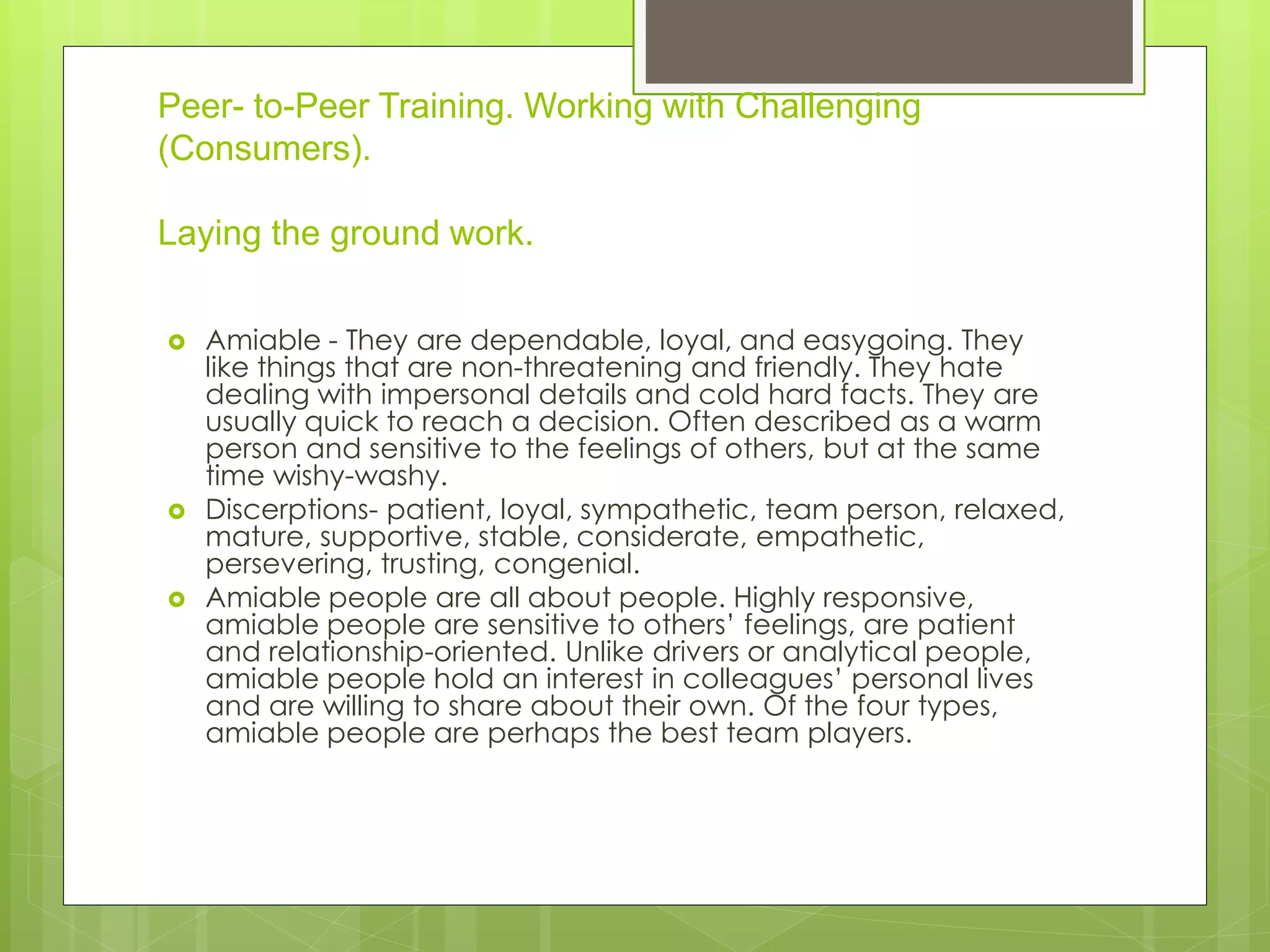The document outlines strategies for effective peer-to-peer training with challenging consumers, emphasizing the importance of consumer buy-in, realistic vocational goals, and building confidence. It highlights the need for understanding each consumer's personality type—analytical, driver, amiable, or expressive—to tailor communication and support. Additionally, the document discusses the role of family expectations and mental health stability in achieving successful vocational outcomes.
